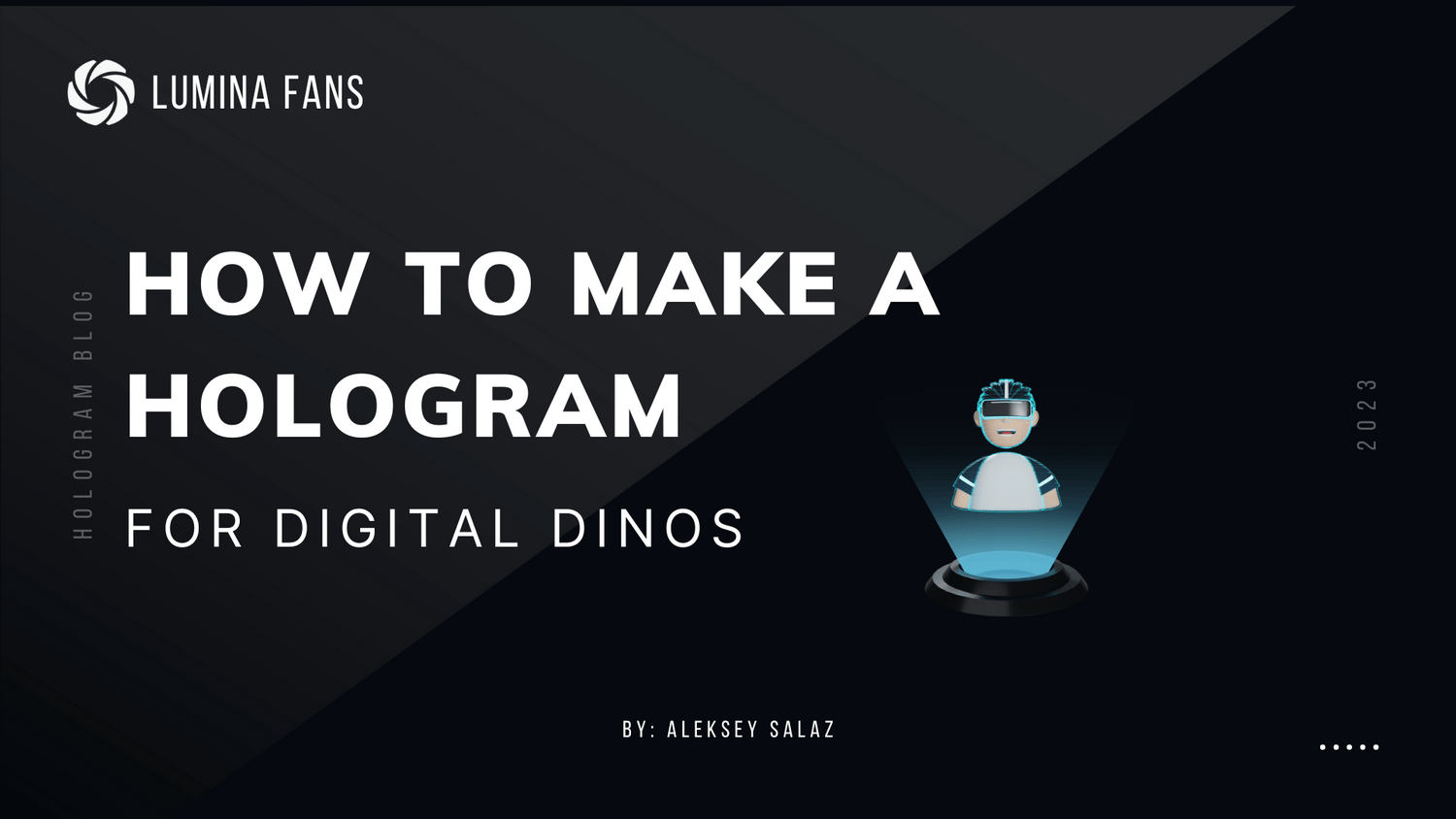Curious about how to make a hologram? It's simpler than you think!
This guide will take you through the thrilling process of creating your own 3D holographic images. Perfect for enthusiasts of all ages, we'll show you how to turn this sci-fi fantasy into a fun, real-world project.
Let's dive in and uncover the secrets of DIY holography!
What is a Hologram?
A hologram is a unique form of photography that captures the light from an object to create a 3D image.
Unlike traditional 3D images, holograms can be viewed without special glasses, offering an illusion of depth and space as if the image is floating.
The Creation Process
Light Field Recording:
- Captures both the intensity and phase of light, crucial for creating a 3D effect.
3D Visualization Without Assistance:
- Provides a realistic depth perception, making images appear three-dimensional.
The Nitty Gritty Details
Coherent Light Source:
- Uses a laser for its coherence, essential for detailed holographic images.
Recording Medium:
- Typically involves photosensitive materials to record the light patterns.
Stable Setup:
- Requires a vibration-free environment to maintain the integrity of the light pattern.
Understanding these aspects is vital for anyone looking to delve into how to make a hologram, emphasizing precision and careful handling of light.
Materials and Tools Needed
To make a hologram, it's important to have the correct materials and tools:
- Laser Light Source: A stable wavelength laser, typically red, like a helium-neon laser, is needed for coherence.
- Holographic Film or Plate: Choose high-resolution materials like silver halide or photopolymer for recording.
- Beam Splitter: This device divides the laser beam into object and reference paths.
- Mirrors: Used for directing the laser beams accurately onto the holographic plate.
- Object for Holography: Select an item with a unique shape and texture for a better hologram effect.
- Stable Platform: Ensures no movement during exposure.
- Dark Room or Low Light Environment: Prevents interference from external light sources.
Having these specific materials and setting up the right environment are essential steps in creating a clear and impressive hologram.
Step-by-step guide for making a hologram:
- Detailed Setup: Carefully arrange your equipment in a controlled, dark environment. Position the laser, beam splitter, and mirrors to precisely direct the beam onto the holographic plate.
- Object Placement: Select an object with interesting textures and shapes. Position it where the split laser beam can evenly illuminate it. This ensures a detailed holographic capture.
- Fine-Tuning Exposure: Control the laser exposure time based on the object’s reflective properties and the sensitivity of your holographic plate. This step is crucial for capturing a clear interference pattern.
- Developing Process: After exposure, the holographic plate is developed in a chemical solution. This step solidifies the interference pattern into a visible hologram.
- Viewing Your Work: Illuminate the developed hologram with a light source similar to your laser. This reveals the 3D holographic image.
Each of these steps requires careful attention to detail to ensure a successful holographic image.
Adjustments in the setup, exposure time, and development process can significantly affect the quality of your hologram.
Tips and Tricks
Enhance your hologram-making process with these helpful hints:
- Make sure the environment is stable and free of vibrations to prevent blurry holograms.
- Use a dark room to avoid interference from external light sources.
- Start with simple objects to get a feel for light and shadow in holography.
- Keep all equipment, especially the holographic plate, clean
- Experiment with various light source angles and distances for different effects.
- Be patient and take your time at each step for more detailed and successful holograms.
Applications of Holograms
Holograms have a wide range of fascinating applications:
- Education and Research: They're used in scientific visualization, medical training, and complex data representation.
- Art and Entertainment: Holography has become a creative medium in art installations and concerts, offering immersive experiences.
- Advertising and Marketing: Businesses use holograms for eye-catching product displays and interactive marketing campaigns.
- Security: Holographic images are employed in security features on credit cards, passports, and currency.
- Telecommunication: The field of telepresence and virtual meetings is evolving with holographic technology.
Understanding these applications provides context to the impact and potential of holography, adding depth to the skill of making holograms.
Conclusion
In concluding our exploration into how to make a hologram, it's important to reflect on the broader implications and opportunities this skill offers.
Beyond being a fascinating hobby, mastering holography equips you with a deeper understanding of optics, physics, and digital imaging. These skills are increasingly valuable in various fields, from scientific research to digital artistry.
As technology progresses, the potential applications for holography are expanding, promising new horizons in communication, education, and entertainment.
Embrace the journey of learning and experimentation, as each hologram you create is a step into a future where 3D visualization plays a pivotal role in our daily lives.


